Audi Q4 e-tron review: A mid-sized SUV that’s fun to drive
Those looking for an all-electric SUV will find the Audi Q4 e-Tron to be a tempting proposition


The Audi Q4 e-tron provides a solid EV option for families looking for a little bit of luxury. While not the quickest or most technologically advanced, this mid-sized SUV is well-priced and lots of fun to drive.
-
+
Responsive to drive
-
+
Lots of room
-
+
Great looks
-
-
Older tech inside
-
-
Not the quickest
Why you can trust T3

The Audi Q4 e-tron might not be the most talked about electric vehicle, but it’s one that could actually be a great choice for new electric converts. Audi’s electric models are all designated as e-tron, while its SUV range carries the Q prefix. Hence the Q4 e-tron is an EV that sits between the Q3 and Q5 ICE models in terms of size.
It is the smallest of Audi’s electric offerings, which also includes the Q8 e-tron and SQ8 e-tron SUVs, as well as the original e-tron GT coupe. That’s not to say that this is a small car – it’s definitely a mid-sized SUV – and has plenty of room for a young family, kids and probably a dog or two.
Launched back in 2021 though, it doesn’t have all the very latest features that the latest Q8 does and while its range is no slouch, it’s also not class-leading. Despite this, over my week testing it, I really enjoyed driving the Audi Q4 e-tron, and think it’s a car that is well worth considering.
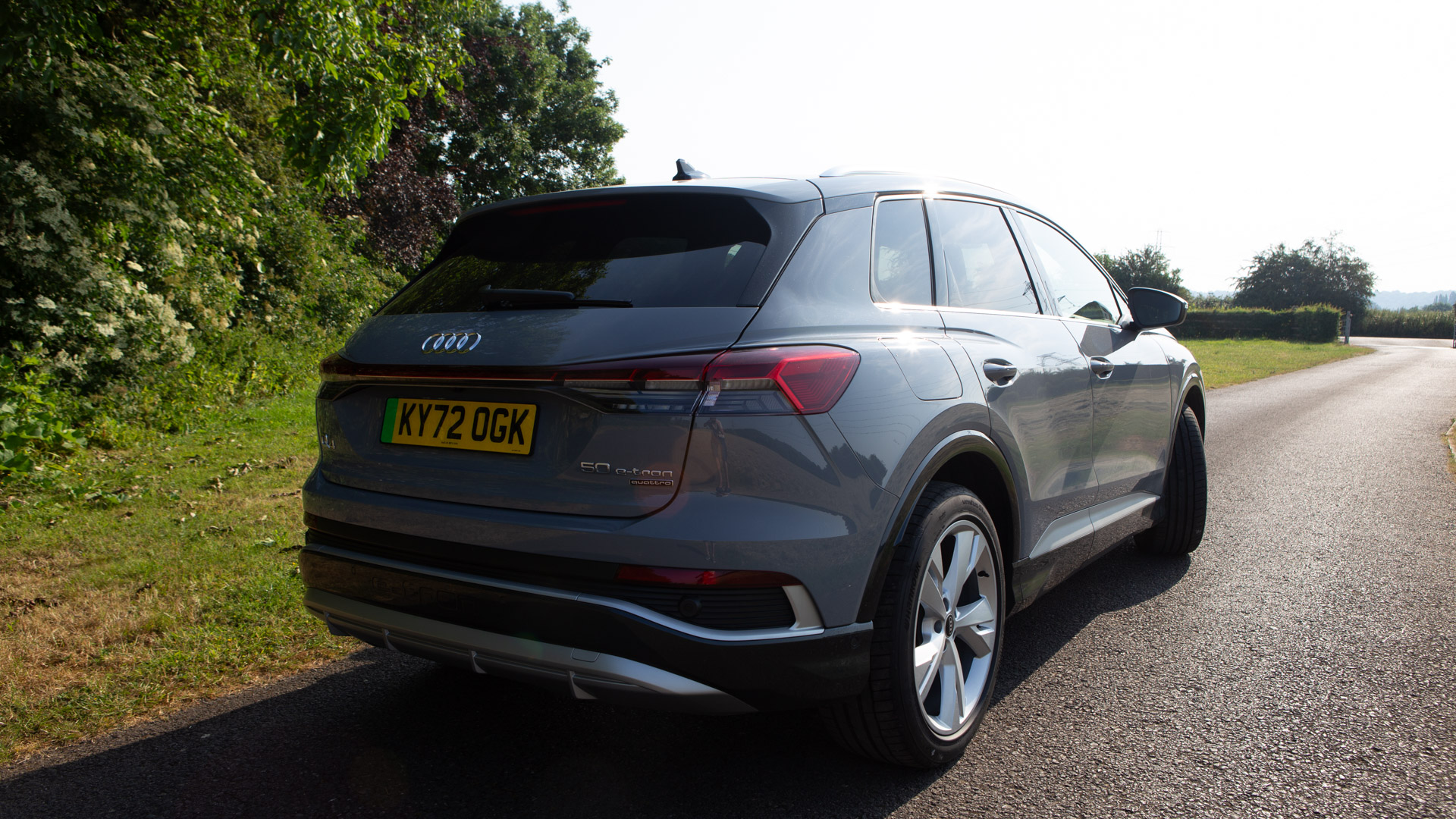
How much is the Audi Q4 e-tron?
The Audi Q4 e-tron start from £51,325 on the road. The model I tested was the S line 50 e-tron with the Technology Pack Pro (£4295), taking the total price up to £63,855 OTR. This is still cheaper than the entry-level Audi Q8 e-tron. Perhaps the closest competitor is the BMW iX1 which starts from £54,655 OTR.

Features and design of the Audi Q4 e-tron
Coming from the VW family, the Audi Q4 e-Tron shares a platform with the VW ID.4 and Skoda Enyaq iV 80. That’s certainly a good thing, as both of these cars are extremely competent electric SUVs.
The difference here is that Audi styling, and while the Q range has certainly moved away from the classic Audi looks, the Q4 is still a great-looking car. That large front grill, side skirts and roof bars certainly don’t hide its SUV credentials but it’s equally not boxy. There’s plenty of curves here, from the bonnet through to the spoiler over the rear window.
Inside, the car has a familiar Audi feel that will please new electric converts. It feels slightly sporty, despite being an SUV, helped by a low driving position and squared-off steering wheel. The whole cabin feels stylish, thanks to the stitched leather seats, gloss-black details and the optional ambient lighting. There’s more plastic here than you’d get on some luxury SUV models but it certainly doesn’t feel cheap.
Get all the latest news, reviews, deals and buying guides on gorgeous tech, home and active products from the T3 experts
Like the ID. 4 and the Enyaq, the Audi Q4 e-tron uses a 77kW battery, and this delivers between 293 and 311 miles of range, depending on the model. This is a slightly lower figure than the VW and Skoda models, presumably due to slight differences in weight and aerodynamics. That 300-mile number though is somewhat of a magic number for EVs, that unless you’re doing regular long road trips, is more than adequate.
The battery will charge at 11kW on AC or 135kW on DC chargers. That means that you won’t get the full benefit of newer fast DC chargers that promise up to 250kW – however, I’ve rarely seen one deliver more than 130kW on any car. The lack of 22kW for home charging is more of an issue though, as it means it could take over 11 hours for a full home charge. Again though, not an issue if you only have a 7kW wall box anyway.
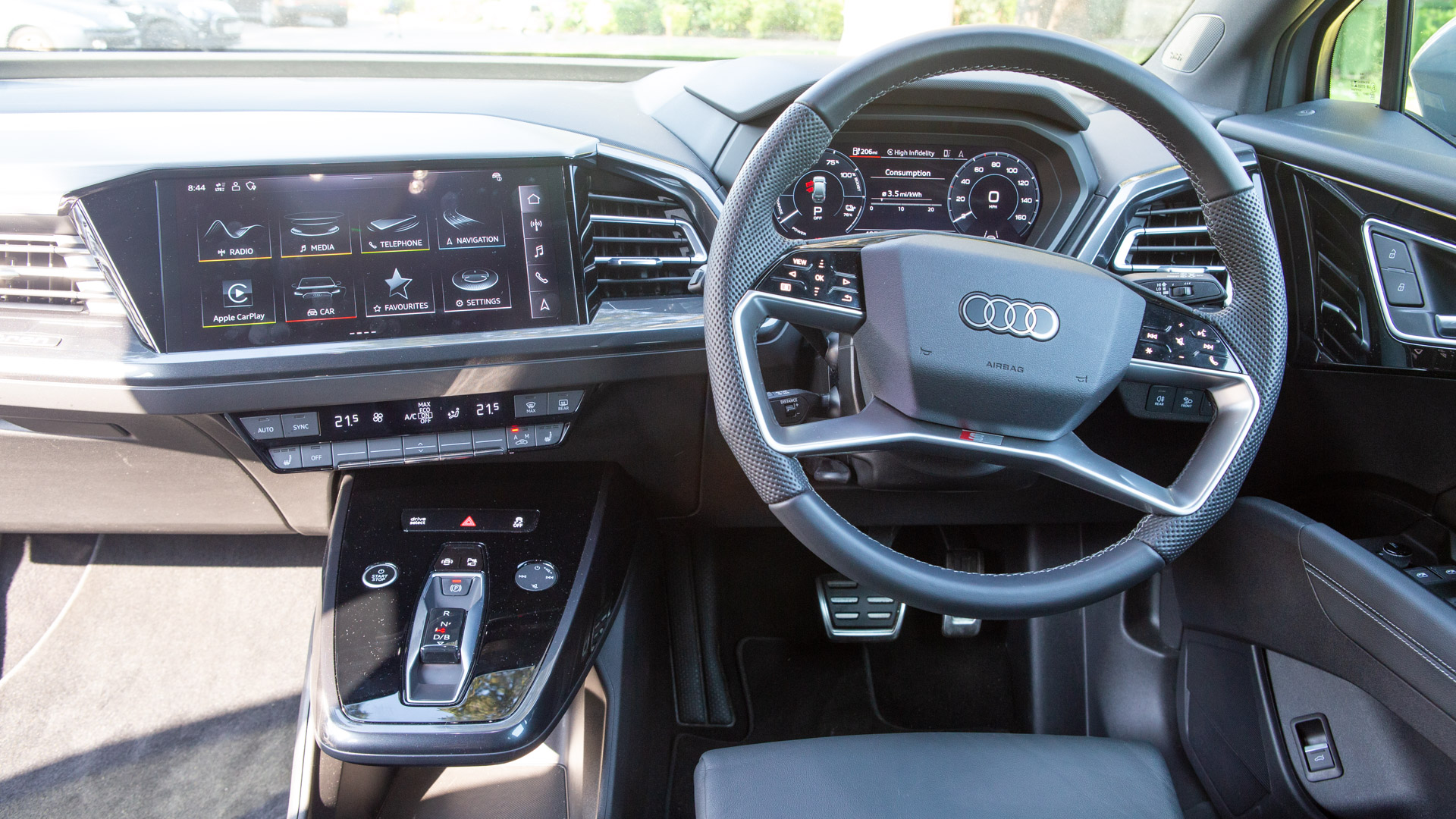
Audi Q4 e-tron's tech
The Audi Q4 e-Tron uses a dual-screen set-up, including a digital instrument display behind the steering wheel and an 11.6-inch touchscreen display in the centre. While not the biggest, unlike many other central displays, it is angled towards the driver, making it easier to see and access, and more a part of the driver’s tools.
There’s also a head-up display unit projected onto the windscreen for the driver that provides speed and navigation information for the journey, including augmented arrows to show where to turn and distance markers under the vehicle in front. The cut-off angle of the head-up display is a little narrow, so you need to make sure you’re positioned in line with it. It’s also not that easy to see when wearing polarised glasses.
The adaptive cruise control works well to control the vehicle’s speed to fit in with surrounding traffic, even with the avoidance of undertaking, by monitoring vehicle speed in the outside lane. This is not as advanced as some other systems but is still extremely handy for longer journeys as well as when sat in heavy traffic. I even used it in a heavy rain storm, to help monitor for sudden braking ahead when visibility dropped – and it only struggled on a couple of occasions to keep track of other vehicles.
The lane departure warning system doesn’t provide much adjustment to keep you within the lane but will warn you if you stay. Again, this is a handy function but not as effective as some of the lane-centring systems out there – which not everyone loves.
There are parking sensors front and rear that do a good job of helping you park, as well as a reversing camera on the rear. There’s also the option of a 360-degree display as part of the Park Assist Plus package, to provide that handy top-down view.

The ‘Technology Pack’ (starting from £1495) also gives you an upgrade to the premium Sonos sound system in the vehicle. As you’d expect, this sounds impressive, with lots of bass and punch throughout the range. It’s not quite as natural sounding as some of the real top-end systems from Burmester and Bowers & Wilkins but it’s still very good.
The Audi infotainment system is very competent, with a clear and simple design, making accessing any function quick and easy. Of course, you can also wirelessly connect to your phone for Apple CarPlay or Android Auto use and use it for your music and navigation. The downside here is that the head-up display won’t show navigation from Google Maps or Apple Maps, so you need to use the central display.
The controls on the steering wheel are touch sensitive, so just the lightest movement of your thumb allows you to change the instrument display or the entertainment volume. While this is great, it’s also easy to change these by accident when turning the wheel. Luckily the speed and distance controls for the adaptive cruise control are on a separate stick, which is set just below the indicator, so there’s no danger of knocking this.
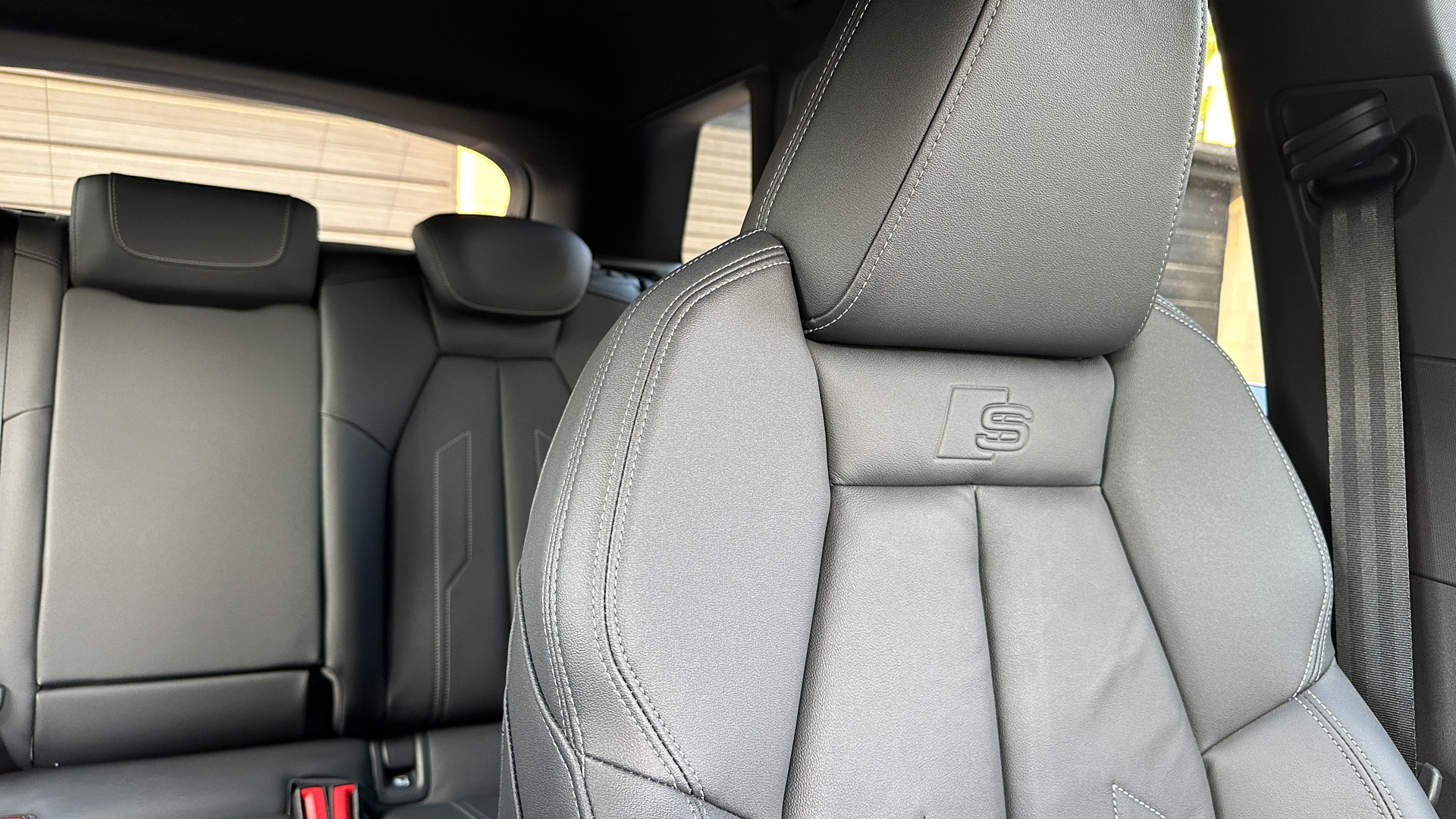
How does the Audi Q4 e-tron perform?
With an output of 150kW or 203 metric horsepower (PS), the Audi Q4 e-Tron 40 is not the quickest off the mark. The e-tron 50 Quattro is a little more powerful, giving 220kW or 299PS but that’s still only a 0-62mph of 6.2 seconds. The e-tron 40 I was driving did feel a little slow by EV standards but for anyone used to petrol or diesel SUVs, it will still feel quick enough.
Once the car is up to speed the experience is very different. The Q4 e-tron has a low driving position that’s more like a saloon car than an SUV which feels better for driving. Compared to large SUVs the car feels pretty lightweight and agile, making it more responsive through corners and down windy roads. It’s a lot more fun to drive than you’d expect an electric SUV to be.
The only downside with the lower driving position is that you do have a deep dash to look over but there’s still plenty of visibility. It’s also manoeuvrable enough to take tight turns and fit into tricky parking spots, despite not having the rear wheel turning of larger models.
Though we’ve mentioned range, perhaps the more important figure as electric charging becomes more expensive is the consumption. Audi quotes up to 16.6kWh per 100km for the Q4 40 e-tron (or 3.7 miles/kWh) and 17.2kWh per 100km (3.6 miles /kWh) for the S line 50 e-tron. This, like the former MPG, is likely to become a better marker for electric cars, and compared to models like the BMW iX1 (3.6miles per kWh) and the Mercedes EQE SUV (3.3 miles per kWh), the Audi Q4 e-tron is pretty economical.
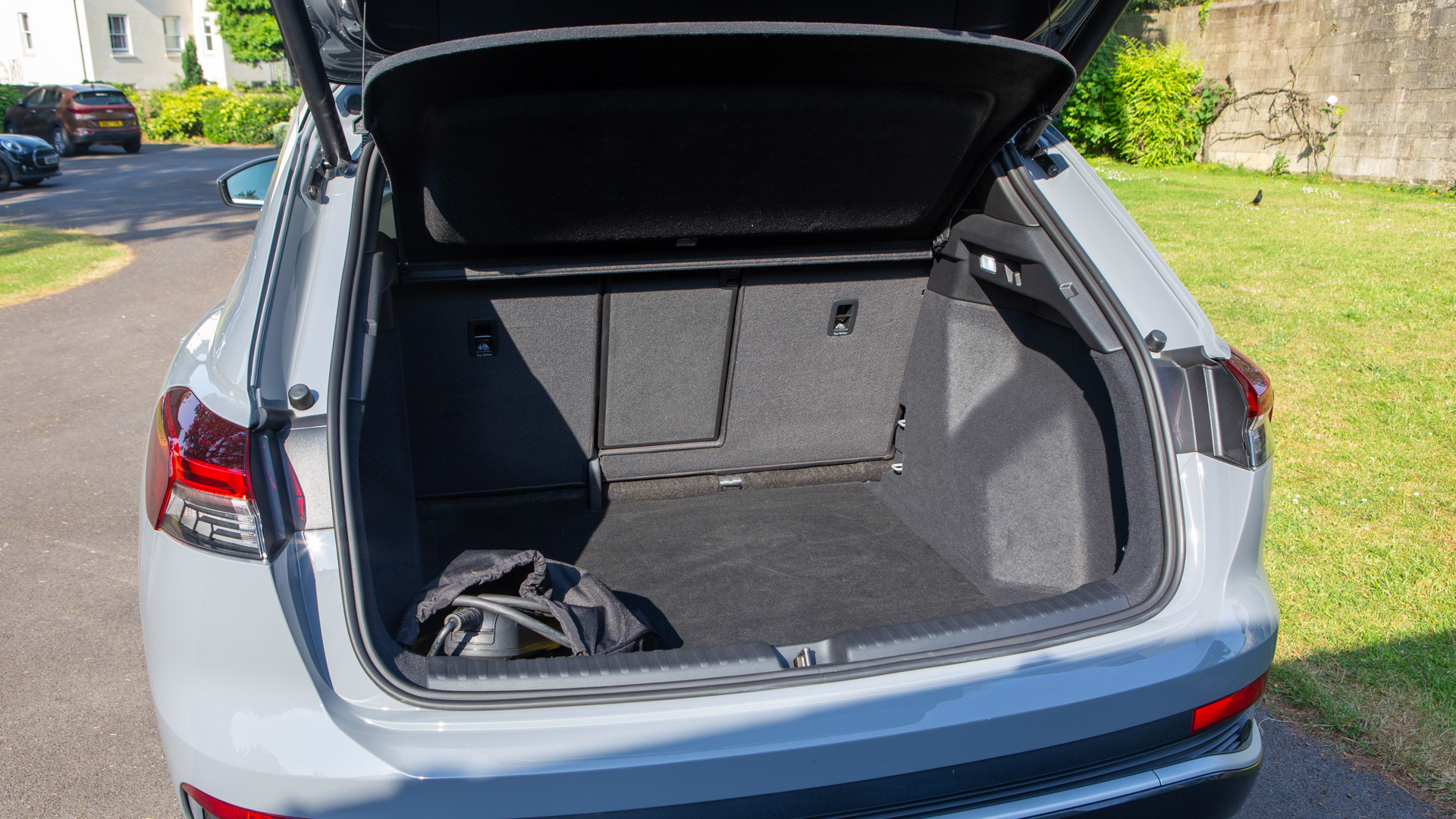
Should I buy the Audi Q4 e-tron?
The Audi Q4 e-tron is a perfect blend of practicality and style. It offers a balance of size and weight making it an ideal family-sized car and yet adds some of that famous Audi styling to take it up a notch or two.
What I love about the Q4 e-tron is much the same as the VW ID. 4, in that it is a fully electric car without really shouting about it. It’s a functional and well-put-together vehicle that just happens to have an electric engine.
Ultimately, as much as dedicated electric vehicles push the limits of what is possible, it’s these EVs that offer a more traditional driving experience that will help drivers make the transition away from ICE cars. Yes, there’s still a change of mindset in terms of refueling but I feel the Q4 e-tron is a car that can help you change to electric with very little fuss.
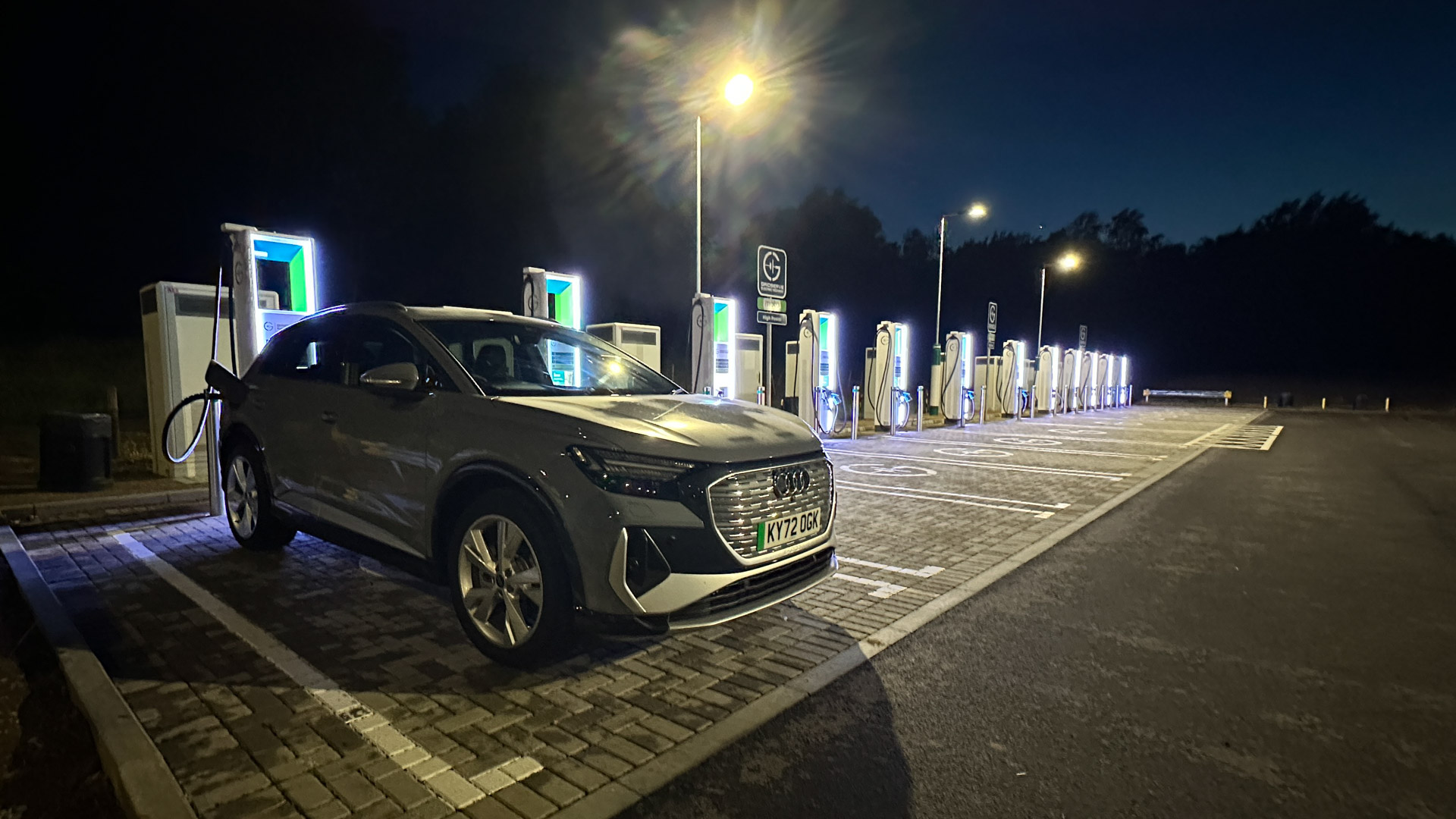
Other EVs to consider
The Audi Q4 e-tron is the most premium of its VW Group stable mates. That means that you can get a similar product by opting for one of the other brands’ mid-size SUV. The closest is the VW ID.4, a vehicle that looks more car than SUV, but still offers a similar size and space inside. The ID. 4 is certainly more of a practical choice, but with that comes savings on the final price, but also a marginal increase in range, with the larger battery (77kW) version offering up to 328 miles.
Skoda’s mid-size electric SUV is the Enyaq iV 80, with impressive specifications for the money. It also offers the sportier Enyaq iV Coupe vRS which for similar money to the Audi Q4 e-tron gives you a 6.4-second 0-60mph and a sporty look.
One of the closest competitors to the Audi Q4 though comes from outside of the group. The BMW iX1 is the smallest electric SUV in a growing range. While the design is certainly boxier than the Audi, it offers an impressive specification for only a little more money. Being on the smaller side this is also a lot of fun to drive. Plus, as this is a newer model, there’s plenty of tech on offer – though mostly as an add-on to that initial price.
If you’re looking for a little more luxury, the Mercedes-Benz EQE SUV is the taller version of the EQE, which in turn is the digital equivalent of the E-class. While all curves on the outside, inside the EQE SUV feels elevated, thanks in part to the higher driving position. There’s no shortage of tech here, and even the option to include the MBUX Hyperscreen display that combines, three displays into a single moulded glass dash.

As T3's Editor-in-Chief, Mat Gallagher has his finger on the pulse for the latest advances in technology. He has written about technology since 2003 and after stints in Beijing, Hong Kong and Chicago is now based in the UK. He’s a true lover of gadgets, but especially anything that involves cameras, Apple, electric cars, musical instruments or travel.